Explore Our Digital Collections

Offline
100th Regiment, New York Volunteers Veteran Association Records, 1894 – 1953
The 100th New York Regiment broke camp at Fort Porter in 1862 to join the Army of the Potomac in the Civil War; it originally numbered approximately 1,000 men. The regiment reunited annually, often together with Peter A. Porter's 8th N.Y. Heavy Artillery regiment. The inventory of their records is online at the Empire Archival Discovery Cooperative.

175 Years: Celebrating the Incorporation of the City of Buffalo, 1832-2007
Selected documents and images from our collections, designed to transport you back to Buffalo in the 1830s.

1828 Buffalo City Directory
The 1828 Buffalo directory was the first city directory published in what was then the village of Buffalo. In 1876, the Courier Company published a directory for Buffalo and included a reprint of the 1828 directory in the back. We are grateful to the Buffalo and Erie County Public Library for digitizing the 1876 directory and granting us permission to download the 1828 page scans and reassemble that first directory for you. It is online in full text.

Adventures in Western New York History
Short, readable booklets on 25 important topics in Buffalo history, including the Buffalo grain elevators, the Pan-American Exposition, and Erie County in the Civil War. All online in full text.

Album: Back Issues of Our Newsletter
Browse full-text back issues of The Album, our colorful member newsletter, which is issued quarterly and features artifacts, events, and photos. To get free online delivery of new issues of The Album, we invite you to join as a member of the Museum.

Offline
Allentown Survey Sheets and Photos, 1970 – 1974
This collection contains survey sheets, data sheets, and some photos from the Landmark Society of the Niagara Frontier’s surveys of the Allentown area in 1970, and the New York State Division for Historic Preservation in 1974. A list of streets surveyed is included in the box and folder list. Inventory now online at the Empire Archival Discovery Cooperative.

Online
Offline
Architectural History Sources in Our Library
Researching your house is popular in Buffalo. But if no one before you studied and wrote up your house's history, then how do you figure it out? This grid shows you what we consult to answer the five most common questions people have about their houses or any other building in Buffalo: When it was built, who built it, who designed it, who lived in it, and what it looked like.

Offline
Architectural Records: A Bibliography
Many architects have practiced in Buffalo, NY, without their business records being saved. This list features promotional brochures, architectural plans, drawings, records, and selected photographs associated with Buffalo-area architects. These items are all in the library collection. This list is at WorldCat.

Archive.org
We now have a page at Archive.org, also known as the Internet Archive, for sharing collections! We are regularly uploading various publications, finding aids, and other material that can be saved as PDFs.

Atlases for Buffalo & Erie County
Listed here are atlases that show individual buildings or land owner names in Buffalo and Erie County, with links for those which have been digitized. These atlases are key for house & building research. Sanborn map of Lafayette Square courtesy of the Library of Congress.
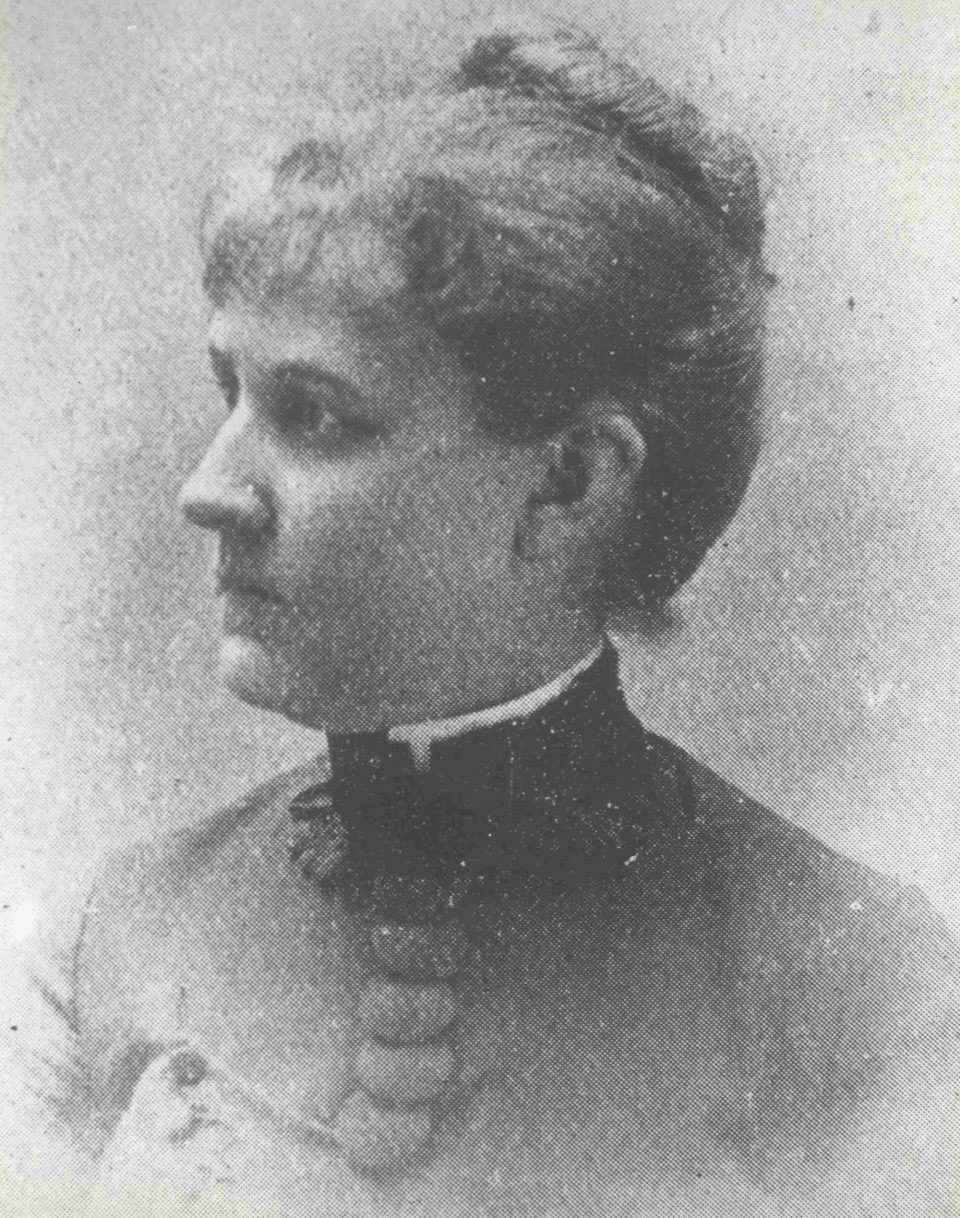
Online
Offline
Bethune, Louise (1856-1913)
Bethune was the first professional woman architect in the United States. She is best known today for her Buffalo masterpiece, the Lafayette Hotel. This is a list of items in our library collection. Links have been added where available.

Bethune’s Daughters: Women Architects in Buffalo, NY
This slide show features current women architects in or from Buffalo, NY. We produced it in 2011 as part of an exhibit on Louise Bethune, America's first professional woman architect.

Offline
Bibliographies & Indexes: A WorldCat List
There is nothing like a good bibliography to open your eyes to books and articles that you never knew existed on your research topic. The bibliographies listed here all have something to do with Buffalonians or the Buffalo/Niagara area. We also added indexes and inventories to major local manuscript collections. This list is at WorldCat.

Offline
Birge, M.H. Company Records
M.H. Birge & Sons was known for the quality of its wallpaper and for the artistry that characterized it. Local landscape artists were hired to paint and develop the original prints. The best known of these, Charles E. Burchfield, designed landscapes in the mid-1920s that depicted the wildlife and scenic beauty of Western New York. Inventory now online at the Empire Archival Discovery Cooperative.

Offline
Black History in the Buffalo Area: A Bibliography
Listed here are books, manuscripts, theses, and dissertations about African-American history in our collection, featuring biographies, autobiographies, organizations, activism, professions, and socioeconomic conditions. This list is at WorldCat.

Black Residents of Buffalo in 1828, 1832, and 1841
For three nonconsecutive years, 1828, 1832, and 1841, Buffalo city directories included a separate page that listed colored residents by name. We indexed all of those names here, about 200 of them, in alphabetical order. Click on About to view the three original directories.

Offline
Black Rock & Riverside: A Bibliography
Once a town in Erie County, Black Rock was annexed by the City of Buffalo in 1854. Today it is a neighborhood in the northwest part of Buffalo, proudly retaining its identity 150 years later. All items listed here are in our library. This list is at WorldCat.

Online
Offline
Black Rock Village History & Genealogy
This is a guide to what we have for researching Black Rock during the village era, 1795-1854. We listed censuses, church records, newspapers, and more. Links have been added when available.

Black-Owned Businesses in 20th Century Buffalo: A Google Map
We consulted three sources to compile this map of 20th century Buffalo Black-owned businesses:
- The Negro Motorist Green Books, 1938-1966
- The Negro Directory of the Niagara Frontier, 1958
- Metro Buffalo's Black Co-op Pages, 1986

Board of Women Managers of the Pan-American Exposition: Complete Minutes
The complete minutes of the Pan-American Exposition Board of Women Managers, 1900-1901, are online in four volumes. They are part of our Pan-American Exposition Company records (Mss. C65-7), the rest of which are not digitized or online.

Offline
Breweries, Temperance & Prohibition: A Bibliography
It didn't make sense to separate out each topic when they're all related. This list includes works about alcoholic beverages of all kinds, malt houses, taverns, saloons, and liquor stores. All of the items listed here are in the library collection. This list is at WorldCat.
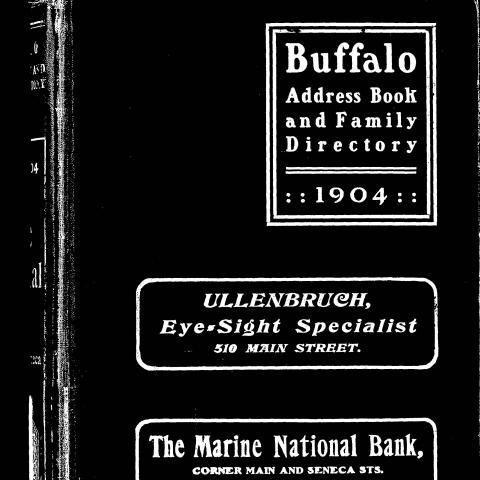
Buffalo Address Books & Family Directories
Published from 1883-1915, these directories list middle & upper income households, with a reverse address section that lists streets in A-Z order, mostly on the West side, with the residents of each house. These directories might help you determine when your house was built.

Buffalo Alleys: A List
We were asked a few times for a list of alleys in the city of Buffalo and we didn't have one. Nor could we find one. So we compiled our own. Here is a list of over 160 of them with sources.

Buffalo Architecture Index
Drawn from primary and secondary sources in our collection, this Google spreadsheet shows the architect and date for 2,000 addresses in the Buffalo area.

Buffalo Artists’ Register: An Index
Published in 1926, the 460-page Buffalo Artists' Register is essentially a biographical dictionary of local painters, sculptors, designers, architects, musicians, dancers, singers, actors, playwrights, photographers, poets, and teachers in these fields. What we are able to offer online is just the index, so you can look up specific names. Illustration from PublicDomainPictures.net.

Offline
Buffalo Corrugated Container / Fibre Factory Company Records
Buffalo Corrugated Container was founded in 1910 by William A. and Harley N. Sickler, and Charles G. Moore, as a manufacturer and seller of corrugated paper and paper board containers and packing boxes. The company was located at 25-39 Imson Street, Buffalo, N.Y. We have their tax and insurance records, 1912-1947. Inventory now online at the Empire Archival Discovery Cooperative

Offline
Buffalo Federation of Women’s Clubs Records
An alliance of women's clubs founded in 1905 as the Buffalo City Federation of Women's Clubs; name changed in 1939. Originally comprising 28 member clubs involved in civic activities "to further citizenship, education and philanthropy," the B.F.W.C. comprised some 71 member clubs by 1985. Inventory now online at the Empire Archival Discovery Cooperative.

Buffalo Historical Society Publications
From 1897 to 1947, we published 34 lengthy volumes of regional history scholarship. Google & others digitized most of them. We collected the links here in chronological order so you can read them online. This series includes the ever popular Picture Book of Earlier Buffalo (1912) and a wealth of essays on the Holland Land Company, the War of 1812, Native Americans, Millard Fillmore, the Erie Canal, and much more.

Buffalo Historical Society, 1930
An illustrated pamphlet with scenes of museum interiors & exhibits. It was published in 1930 to commemorate the expansion of our original 1901 building. Architect George Cary (1859-1945) designed the building and the additions. Library call number F116 .B83 B84 1930.

Buffalo History Museum Blog
Essays by staff experts about collections, artifacts, research techniques, museum activities, and historical events. Newly redesigned, with fresh content on the way! Older articles are here. Clip art courtesy of PublicDomainVectors.org.

Buffalo History Museum EOS Podcast
Our new podcast is the premier audio source for Western New York history. Every two weeks, we'll share a new and unique story from local history. The podcast is part of The Buffalo History Museum's Project EOS, which is made possible by support from the National Endowment for the Humanities.

Buffalo History Museum YouTube Channel
Recordings of our webinars, tours of exhibits, features on artifacts and collections, performers on our portico, appearances from local authors, messages from our staff and Executive Director, and more. We have over 85 videos loaded here.

Buffalo License Register, 1850-1863
Lists name of licensee and date of issue of license for butchers, cartmen, emigrant boarding houses, groceries, hackneys, omnibuses, porters, runners, shows and exhibitions, taverns, and wagons, 1850 Mar. 16 to 1863 Sept. 30. Scanning donated by Bridge & Case LLC.

Buffalo Municipal Housing Authority Maps, 1935
Digitized by Library volunteer Brenda Myc, MLS, these maps were selected from an atlas which documented poverty and slum conditions in Buffalo during the Great Depression. Individual maps show the distribution of ethnic and immigrant groups; the density of population; the incidence of crime, juvenile delinquency, and venereal disease; and other social conditions. Maps also show Buffalo ward boundaries and councilmanic districts. Several are hand-colored. Here is the report that accompanies these maps.

Offline
Buffalo on Stage & Screen: A Bibliography
Movies, TV shows, scripts, plays, musicals, all chosen because the story was set in the Buffalo area or the production was filmed in the Buffalo area. Includes documentary films as well as feature films, plus works on Buffalo theater buildings. All of these items are in the Library collection of The Buffalo History Museum. Image courtesy of Wikimedia Commons.

Offline
Buffalo Police Department general order books minutes and scrapbooks, 1872 – 1959,
Collection includes General order books, 1872-1878, 1885-1892, 1902-1906; telegraph blotter, 1883-1884; board of police minutes, 1915-1916; and two scrapbooks, ca. 1934-1948. Inventory is online at Empire Archival Discovery,

Buffalo Postcard Collection
From our 7,000 or so postcards, we selected and scanned some rare cards that we haven't already seen online, with historical notes on each one. This project is online at NYHeritage.org.

Offline
Buffalo Protest Collection
Collection of materials related to civil rights activism in the Buffalo area in the late 1960s and early '70s. Inventory now online at the Empire Archival Discovery Cooperative.

Buffalo Town Meeting Proceedings, 1814-1837
Here are 409 pages of the Buffalo Town Meeting proceedings, also called the Town Book, scanned from the microfilm version in our library. Town meetings were held annually and covered topics such as elections, roads and highways, finances and schools. Between town meetings, other reports given to the Town Clerk were recorded. This includes slave affidavits given by Isaac F. Bowman (p. 3), and Peter B. and Letitia P. Porter (p. 93); stray animal notices; and earmark records regarding animal ownership. The PDF is not full text searchable as the original is handwritten.

Buffalo’s Bethune: America’s First Woman Architect
Panel designs from an exhibit held from 2011-2012 on Louise Bethune, the first professional woman architect in America. Some objects on the panels were not available for online use. Many thanks to Brian McAlonie and Kelly Hayes McAlonie for co-curating this exhibit.

Buffalo’s Name Origin: Theories Summarized and Ranked
The one thing that all name theorists agree on is that Buffalo the city takes its name from Buffalo Creek, now called the Buffalo River. The debate revolves around how the creek was named. We identified seven theories about the origin of Buffalo's name. We present each theory here on its own page in a Google sheet, with evidence in favor and opposed, and sources. The one true answer may never be established, so we added our own plausibility rankings. You can also view the entire document as a PDF.

Offline
Business Records: A Bibliography
Listed here are manuscripts and primary sources, mainly internal records of companies and firms, in the library collection. Unfortunately, most businesses come and go without their records being saved. Employee or personnel records are rarely if ever retained. This list is at WorldCat.

Offline
Cary, George (1859-1945): Photographs & Drawings
George Cary is best remembered today as the architect who designed the New York State building at the Pan-American Exposition, the home of The Buffalo History Museum ever since 1902, and the Administration building of the Pierce-Arrow factory. This is a list of his photos, plans, and drawings in our collection. The plans & drawings are stored off-site and may be seen by appointment. Cary portrait courtesy of Wikipedia.

Cemeteries in Erie County: A Google Map
A Google map showing locations, or approximate locations, of cemeteries and burial grounds, past and present, in Buffalo and Erie County, NY. Includes name changes and links to records, if known. Always remember to verify rights of access and cemetery rules before visiting any burial location. In New York State, access to cemeteries on private land requires the permission of the property owner.

Online
Offline
Cemetery Records on Microfilm
A list of the cemetery records in our collection, in A-Z order by name of cemetery. We added links to those we have found online. Image courtesy of Piqsels.com.

Cholera Deaths, 1832, 1849, 1854
A compilation of fatalities in Buffalo's three cholera epidemics, compiled by Dr. Glenice Guthrie in 2007 and shared here with her permission. Names are listed in approximate chronological order.

Cholera Deaths, 1854
Buffalo suffered several outbreaks of cholera. In 1854, Dr. James Newman kept a ledger of the deaths that occurred in Buffalo, which is now in our collection. Here is an index of about 1,000 names in that ledger, compiled and shared by Dr. Roseanne Higgins. Image courtesy of Wikimedia.

Online
Offline
Church Records: Microfilm, Print, and Online
Church records are often the only surviving proof of births, marriages, and deaths from before the advent of government-issued vital records. We have a large collection of Buffalo-area church records on microfilm and in print. Some are being digitized, nearly all by FamilySearch.org. We add links when we find them. Image from Picture Book of Earlier Buffalo, p. 106.

Churches in Buffalo, 1901: A Google Map
In 1901, the Charity Organization Society of Buffalo published a map showed the location of every church in Buffalo, NY. Intern Peter Malia replicated that map here. Churches are color-coded by denomination. We added some pictures and links to surviving church records.

Offline
Civil War Collection, 1830-1929
Muster rolls, histories, diaries, and other official and personal papers concerning various New York regiments and naval operations, including the 3rd, 20th, 21st, 49th, 94th, 100th, 116th and 179th Infantry; 11th and 12th Cavalry; 1st Light Artillery (Wiedrich's Battery), 12th Light Artillery, 27th Light Artillery (Eaton's Battery), and 16th Heavy Artillery, as well as some non-New York military units. Inventory now online at the Empire Archival Discovery Cooperative.

Cleveland, Grover: A Google Map of Sites in Buffalo
According to his biographers, period newspaper accounts, and Buffalo city directories, this map shows places where Grover Cleveland worked (blue pins), lived (red pins) or dined, visited, spent leisure time, gave speeches, etc. (yellow pins). Extant buildings & sites are marked with stars. Here's a chronological list of his home addresses in Buffalo, with links to pictures where available.

Cleveland, Grover: An Index of His Papers
President Cleveland's presidential papers are in the Library of Congress. When they microfilmed them, we acquired a set of the films. Those films are now fully digitized and online. Here is a searchable index of his papers, featuring the names of people with whom he corresponded. You can check and see if your Buffalo ancestors are among them.

Cleveland, Grover: Buffalo Addresses
Grover Cleveland never owned a home during his years in Buffalo. He did buy land as an investment but never took up residence on it. Instead, he lived in downtown boarding houses and similar rented quarters. None of these buildings survive today. His last and longest Buffalo address, the Weed Block, was demolished in 1901. Here is a chronological list of his Buffalo addresses, with images where available. Image of Weed Block from Picture Book of Earlier Buffalo (1912), p.154.

Cleveland, Grover: Papers
Grover Cleveland's presidential papers are in the Library of Congress. When they microfilmed them, we acquired a set of the films. They have now completed a full digitization of those microfilms.

Cleveland, Grover: Top Five Urban Legends
Several claims have been published recently about Buffalo places where Grover Cleveland lived or liked to hang out. Are they true?

Crystal Beach
Selected period photographs from the beloved amusement park in Fort Erie, Ontario. Now online at NYHeritage.org.

Death Record of Old Buffalo Settlers, 1833-1883, by Thomas Farnham
Thomas Farnham (1809-1883) kept a handwritten record of the passing of Buffalo's earliest residents, with biographical notes. It grew to be over 600 pages long and is now in our collection. He twice published name & death date lists from of his manuscript in the Buffalo Commercial Advertiser. We used those two published lists to compile this index of the people he kept track of. There are over 900 names and death dates here. Farnham tombstone image courtesy of Phyllis Meyer at FindAGrave.com.

Offline
DeForest, Marian (1864-1935): An Inventory of Her Papers
Marian de Forest earned fame far beyond the local scene for her work as a playwright and author. She is best known as the author of Little Women, a dramatic adaptation of the story of the same name by Louisa May Alcott. Little Women was completed in 1911, had stage productions in Buffalo and elsewhere, and received rave reviews on the New York stage in 1912. Perhaps more significantly, the play served as the vehicle for Katharine Cornell's rise to acting stardom in the London stage production in 1919. De Forest also edited and published letters found at the Alcott home in Massachusetts, in a book entitled Little Women: Letters from the House of Alcott. Inventory now online at the Empire Archival Discovery Cooperative. De Forest portrait courtesy of Wikipedia.

Offline
Directories for Buffalo: A Bibliography
Telephone directories, city directories, suburban directories, social directories, business directories, alumni directories, church directories, employee & professional directories, nonprofit & cultural organization directories, membership rosters, we like 'em all. All of the items on this list can be found in hard copy in our Research Library. This list is at WorldCat.

Offline
Donovan, William J. (1883-1959) Papers
This collection includes Donovan's correspondence and printed material relating to Captain (later Colonel) Donovan's military service with the 1st Cavalry, New York National Guard, and then with the "Fighting 69th" New York Infantry in World War I; his legal career in Buffalo with O'Brian, Hamlin, Donovan & Goodyear; and his involvement with the American Legion, Theodore Roosevelt Memorial Association, and Columbia University, circa 1915-1920. Correspondents include Douglas MacArthur. Inventory now online at the Empire Archival Discovery Cooperative.

Drinking Map of Buffalo, 1828 to the Present: A Google Map
A thorough map of everyone we could find who was and is involved in the production of alcoholic beverages in Buffalo and Erie County. We color-coded the locations of 90 breweries, 60 malt houses, 60 distilleries, 7 wineries, and 15 cider houses, with logos for currently operating businesses.
Early Erie County Vital Records, 1847-1848
In 1847, a law requiring the registration of vital records was enacted by the New York State legislature. The vital records were to be registered in the towns and most towns complied, at least for the year 1847. But either because of lack of interest or enforcement by the State, compliance quickly diminished and in 1851 the law was repealed. Here is a list of Erie County births, marriages, and deaths from those surviving records. Many thanks to the Western New York Genealogical Society for first indexing and publishing these records. Folder icon courtesy of MaxPixel.net.

Early Settlers Index
A list of over 6,000 names of adults who settled in Buffalo, mostly prior to 1840. Be sure to click on Sources, which shows where we found these names. We add names from time to time if we find a good list. Illustration from Pioneer History of the Holland Land Purchase, 1849.

Echando Raices: Hispanics Building a Life & Legacy in Western NY
In September 2014, we unveiled our first-ever exhibit on Hispanic history in Buffalo. The original exhibit panel designs from Echando Raices are shown here. Many thanks to Mr. Casimiro Rodriguez and the Hispanic Heritage Council for their assistance.

Empire Archival Discovery: Our Finding Aids
The Empire Archival Discovery Cooperative (EADC) is a new shared venture where libraries and archives are uploading guides to our offline, archival collections. At this link, you can browse the 50 finding aids, collection guides, and inventories that we have contributed so far, and search across everything added by other institutions in NY state.

Episcopal Diocese of Western New York Records
Back around 1983 when the records of multiple Buffalo-area Episcopal pastors and parishes were originally microfilmed, the result was incoherent and almost unusable. We studied the film and wrote a detailed table of contents to help you navigate it. That microfilm has been scanned and is now fully online courtesy of FamilySearch.org. The link is in our guide.

Offline
Erie & Barge Canal: A Bibliography
When the Erie Canal opened in 1825, it transformed Buffalo into an economic powerhouse. The largest collection of archival Erie canal records, including construction and administration, is in the New York State Archives. Most of what we happened to collect is published material such as books and pamphlets. This list is at WorldCat.

Online
Offline
Erie County Clerk’s Office
We have two sets of records from the Erie County Clerk's office. While they are not digitized or online, we do have these inventories and indexes:
- Guide to the Erie County Clerk Records, 1808-1926, a detailed box and folder inventory
- Personal Name Index, so you can easily see if an ancestor is included in the above collection
- Erie County Insolvency Papers, 1807-1889

Erie County Prisoner Identification Cards
Names of 1,025 inmates at the Erie County Penitentiary from 1896 to 1914. The majority of the pictures date from 1899-1905. The photographs have warped over the years, are not digitized or online, and may be seen by visiting in person. A Scholar Pass is required to use this collection.

Offline
Esenwein & Johnson Records and Richard Goehle Papers
Records of the architectural firm of Esenwein & Johnson, including job contracts, specifications and plans, 1898-1940; records concerning lease of office space in Ellicott Square Building, 1897-1926; partnership with B. Frank Kelly, 1932; and bank records, employee tax records, account books and ledgers, 1910-1942. Includes plan of marble mosaic floor for Ellicott Square Building, designed by James A. Johnson and W.W. Kent, 1930. All were donated by Mr. Goehle, the firm's office manager. Inventory now online at the Empire Archival Discovery Cooperative

Offline
Fillmore, Millard: Guide to Papers
Fillmore's papers are on 68 rolls of microfilm. This guide explains what is on each roll. To the best of our knowledge, the microfilms have not been digitized.
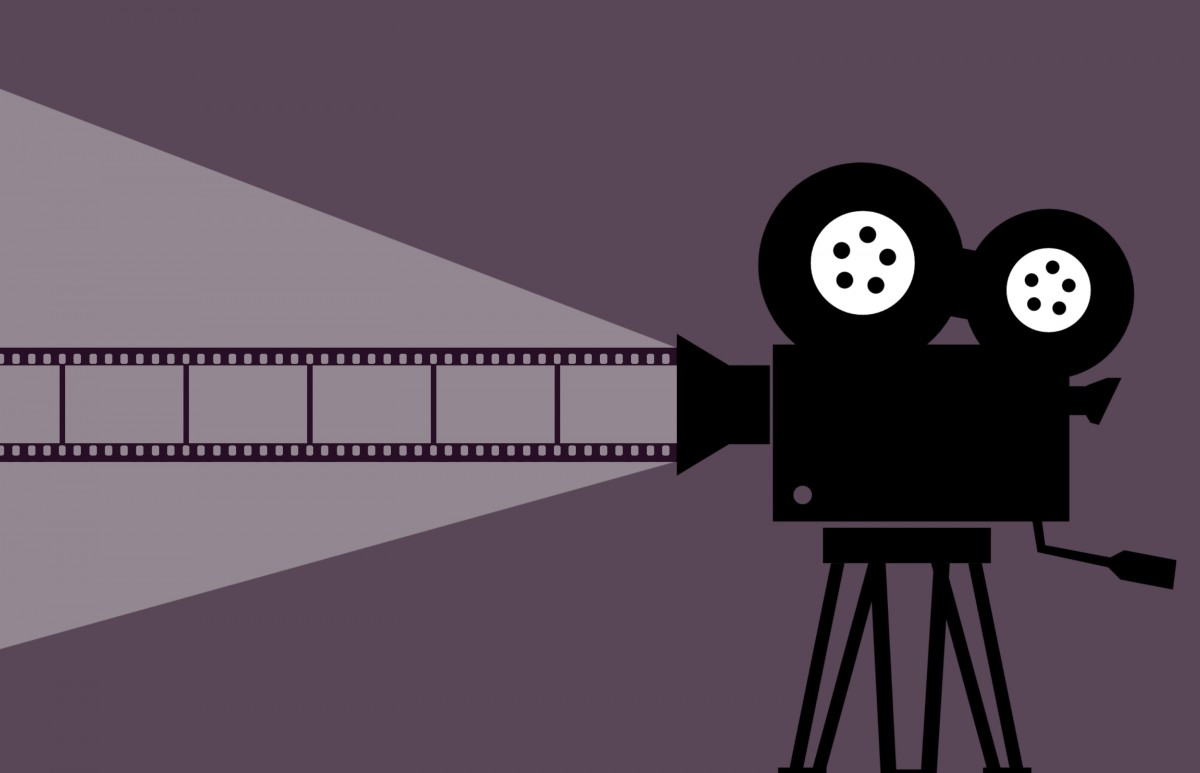
Filmography of Buffalo
A detailed and thorough spreadsheet of feature films, documentaries, and television productions either filmed or set in the Buffalo area. We are still adding to it. Illustration courtesy of Pixhere.com.

Firsts in Buffalo: A List of Major and Minor Individuals and Events
For this page, we collected 250 Buffalo Firsts in these three categories:
- Demographic, such as the first woman who did X
- Inventions, such as Buffalo-style chicken wings
- Occurrences in Buffalo of things already invented, such as the first school

Offline
Food, Restaurants & Cookbooks: A Bibliography
Listed here are cookbooks, restaurant guides, and anything else related to recipes, banquets, cafes, grocery stores, bakeries, dairies, meat packers, confectioners, etc. All are in our library collection. The photographs listed here are not digitized and must be viewed in person. We also have a growing, uncataloged Buffalo-area menu collection.

Online
Offline
FRANK Library Catalog
FRANK stands for Find Resources and New Knowledge. It's the nickname we gave our online library catalog. FRANK is the most comprehensive tool to identify resources and collections within the Museum’s Research Library. Over 30,000 unique works (books, periodicals, manuscripts, letters, diaries, journals, microfilms, DVDs, and more) are listed here. To improve at-home access, we regularly add links, where available, to full-text, online versions of items we own.

Offline
Gay, Lesbian, Bisexual & Transgender History in the Buffalo Area: A Bibliography
Welcome to the first known bibliography of Buffalo's LGBTQ history! Listed here are books, periodicals, manuscripts, multi-media, and a few articles dealing with gay, lesbian, bisexual, and transgender history and experience in Buffalo, NY, and the surrounding western/upstate New York area. These items are found in the collections of the Buffalo History Museum and libraries other than the Buffalo History Museum. This list is at WorldCat.

Genealogy Basics at the Buffalo History Museum
An online slide show/tutorial about what to expect if you plan a family history research trip to our Library. Illustration courtesy of Wikimedia.

Online
Offline
Genealogy Collections: Our Greatest Hits
A brief overview of our most popular and useful genealogy resources: censuses; church records; city directories; death, obituary and cemetery records; marriage indexes; military service indexes; social directories; telephone directories; and voter registration lists. Links have been added where available. Image courtesy of PublicDomainVectors.org

Offline
Genealogy in Buffalo & Erie County: A Bibliography
A list of of the best books for those researching ancestors and family history in Buffalo and Erie County, NY. Omitted are single-name books, microfilms, and other non-book items. Some titles appear twice because of being issued in different editions or versions. We tried to focus on works available in Buffalo area libraries, but some are owned only by out-of-town libraries. This list is at WorldCat.

German Missionary Church: Index to Members
This ledger, Verzeichniss der kirchen-glieder der deutschen missions-kirche in Buffalo, N.Y. contains 6 pages of member names from 1854-1858. We believe the mission was on Goodell near Oak. The ledger is in German, with fading ink. Several entries were not fully legible. Here is an index of the names, as best as we could make out.

Offline
Goodyear, A. Conger: War of 1812 Manuscripts
Anson Conger Goodyear (1877-1964) collected letters and documents from the period and donated them to us. An inventory of his collection is now online at the Empire Archival Discovery Cooperative. Map courtesy of the Library of Congress

Offline
Grain Elevators & Grain Industry in Buffalo: A Bibliography
Behemoth concrete silos still line the Buffalo waterfront, monuments from the years when Buffalo was one of the largest grain ports in the world. All items listed here are in the library collection and focus on grain elevators, grain scoopers, and Buffalo's flour milling & feed industry.

Grain Elevators in Buffalo: A Google Map
A thorough map of all known Buffalo grain elevators, past and present, including elevators that were on land that has since been excavated to enlarge the Buffalo River.

Offline
Green & Wicks: A Bibliography
Buffalo's most notable architectural firm, Green & Wicks (later E.B. Green & Son), was founded in 1881. They designed over 350 works throughout the Northeast, with a concentration of about 200 houses, banks, office buildings, churches, and public buildings in Buffalo, NY. The firm went through several changes in name and personnel and was called James, Meadow & Howard at the time it folded in 1974. This list features items owned by the Buffalo History Museum and libraries other than the Buffalo History Museum. This list is at WorldCat.
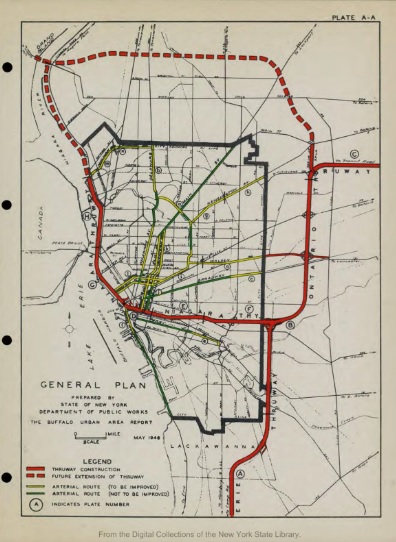
Online
Offline
Highway History in Buffalo: A Guide
Here is a list of books, studies, images, atlases, and other material that documents the planning and construction of the Humboldt and Kensington expressways in Buffalo. Links have been added where available.

Offline
Hispanic/Latino History in Buffalo: A Bibliography
Listed here are books, manuscripts, theses, and dissertations about Buffalo-area Hispanics & Latinos/Latinas in the library collection. This list is at WorldCat.

Historic Markers in Buffalo & Erie County: A Google Map
This map shows historic markers in Buffalo and Erie County that have been submitted to the Historic Marker Database as of July 2023.

History of the Town Series
In 1971-1972, to celebrate the sesquicentennial of the County of Erie, we published a series of pamphlets, one for each town and city in Erie County. Those 27 illustrated booklets, long out of print, are presented here in full text. Many thanks to W.S. Hein for carefully scanning these volumes. Erie County graphic courtesy of Wikipedia.

Offline
Holland Land Company and Joseph Ellicott: A Bibliography
Joseph Ellicott (1760-1826) is considered the founder of Buffalo, NY. As an agent of the Holland Land Company, he supervised land sales to the first settlers of Western New York. Listed here are books and manuscripts in the library collection about the Holland Land Company, including Joseph Ellicott and his family.

Holland Land Company Collection
This collection contains three primary subsets: Joseph Ellicott's correspondence; the Henry Glowacki papers; and the Charles W. Evans papers. We microfilmed them in 1987. FamilySearch.org then digitized the films. You will need to register for a free FamilySearch account to view them. Then scroll down for a description of the contents of each roll of film and click on the tiny camera icons to start reading them. Unfortunately, there is no keyword searchability.

Hopkins Marriages, Williamsville, 1841-1884
A list of weddings performed in Williamsville, NY, from 1841 to 1884, by Timothy Hopkins, a Justice of the Peace. Scanned from a carbon copy of a typed list in the Hopkins Family Papers, Mss. A70-28, folder 3. Portrait of Timothy Hopkins from Smith, Henry P., History of the City of Buffalo and Erie County (1884)...vol. 1, p. 411.

House History at The Buffalo History Museum
An online slide show/tutorial, newly revised and expanded.

Offline
House History Handbooks: A Bibliography
These books form the core collection for anyone who wants to research a house, church, factory, or any other kind of building in the Buffalo, NY area. All are available in our library. This list is at WorldCat.
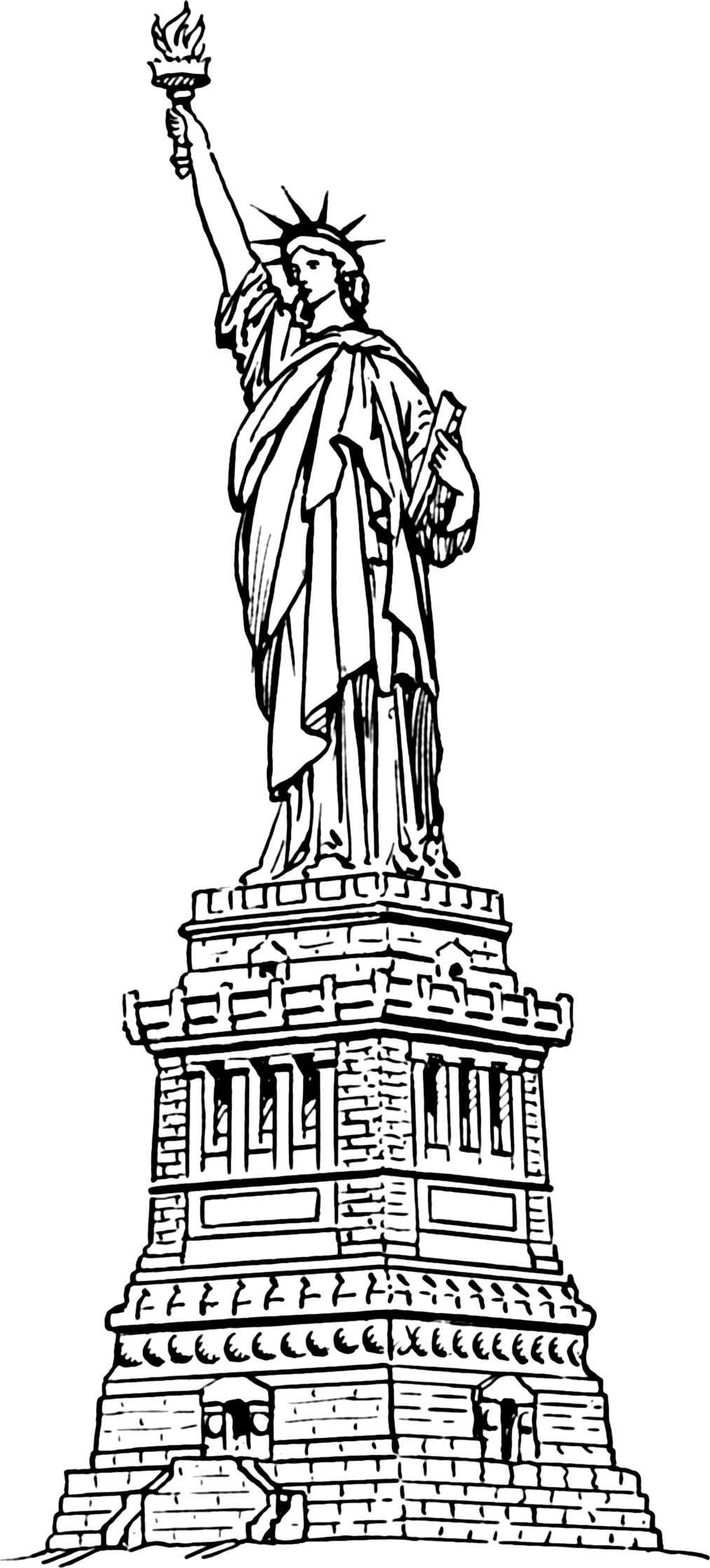
Online
Offline
Immigrants in Buffalo: A Short Reading List
If you were to read just one work on each of Buffalo’s major ethnic, racial, religious, or cultural populations, here are some suggestions. We chose histories, studies, and memoirs for this list. Every item is available in our library and some are online in full text. Illustration courtesy of Wikimedia.

Industries of Buffalo: An Index
Industries of Buffalo came out in 1887 and features short profiles of hundreds of businesses in Buffalo, including manufacturers, retailers, railroads, hotels, banks, and more. Before it was digitized courtesy of Archive.org, we indexed it. Here's a list of all of those businesses.

Online
Offline
Influenza in Buffalo, 1918-1919: A Bibliography
A guide to sources documenting how Buffalo responded to the flu pandemic of 1918-1919. Includes a copy of the City quarantine notice. Links have been added where available.

Offline
Irish-American & Buffalo’s Old First Ward: A Bibliography
Listed here are fiction and nonfiction items in our library that have to do with Irish-Americans, Buffalo's Old First Ward, and South Buffalo. This list is at WorldCat.

Offline
James, Meadows, and Howard Collection, 1893-1974
James, Meadows and Howard (JMH) originally began as the Green & Wicks architectural firm in 1884. The firm's designs included the Federal Reserve Bank on South Elmwood Avenue, and buildings in the Buffalo General Hospital and Children's Hospital complexes, Erie County Medical Center, and at the University of Buffalo. JMH was dissolved in 1974. Inventory now online at the Empire Archival Discovery Cooperative.

Jazz Clubs in Buffalo, 1945-1970: A Google Map
Includes the addresses, years of operation, and some of the owners during the years when these clubs were in business. Researched and developed by Kanisha Greaves, student intern in the Research Library, Fall 2012.

Offline
Jonson, George W. (1801-1880) Diaries
George Washington Jonson (sometimes misspelled Johnson), a Buffalo lawyer, land agent, and abolitionist, kept detailed diaries for most of his adult life. His citizen activism included work with the Underground Railroad, opposition to debtor's prisons, and participation in the movement to impeach President Andrew Johnson. We have several of his diaries. Image courtesy of Pixabay.
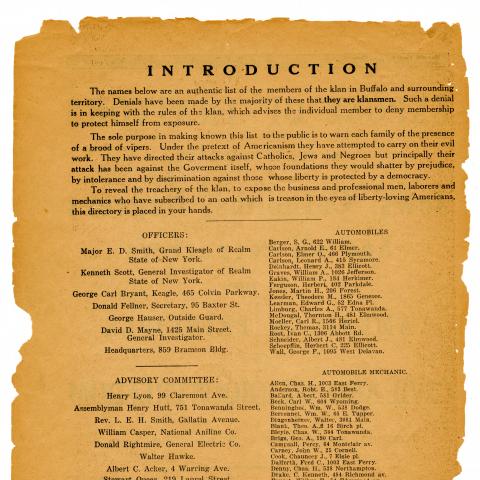
Ku Klux Klan List of Members
In 1923-1924, the KKK had a short-lived chapter in Buffalo. Here is a list of members with a short essay on how the Klan managed to get a toehold on the Niagara Frontier.

Offline
Labor History in the Buffalo Area: A Bibliography
Buffalo has a long and rich labor history. This list features books, periodicals, archival material, and photographs photographs associated with Buffalo-area workers, trade unions, strikes, and employee associations. These items are all in the library collection. This list is at WorldCat.

Offline
Larkin Company: A Bibliography
Founded by John D. Larkin in 1875, the Larkin Company started out as a soap factory and became a mail-order house to rival Sears & Roebuck, selling furniture, china, groceries, paint, wallpaper, and dry goods. Largely defunct by the end of the Great Depression, Larkin is best remembered today for hiring a young Frank Lloyd Wright to design its Administration Building, an architectural landmark that was demolished in 1950. Featured here are books, theses, dissertations, manuscripts, company records, and similar print sources on the company and its subsidiaries, including Buffalo Pottery, in the collection. This list is at WorldCat.

Larkin Filmstrip from ca. 1930: Mrs. James Brown Starts a Larkin Club
This is one of 3 filmstrips produced by the Larkin Company around 1930 to recruit women to join Larkin buying clubs. Filmstrips were essentially the slide shows of the period, with black & white still images that were narrated by a live speaker.

Offline
Levine, Adeline: Love Canal Collection
Dr. Adeline Levine (1926-2015), a professor of sociology at the State University of New York at Buffalo from 1968 to 1990, studied the sociological aspects of the Love Canal disaster. She donated her papers to us in 1994. The inventory of this extensive collection is now online at the Empire Archival Discovery Cooperative. Photo courtesy of the New York State Department of Health.

Offline
Lyman, Duane and Associates, Architects
This collection chiefly reflects the schools and other public buildings, office buildings, and church structures which were designed by Duane S. Lyman for clients in Buffalo and Western New York State. Included are proposals, plans, job descriptions, budget estimates, and photographs. Inventory now online at the Empire Archival Discovery Cooperative.

Offline
Martin, Darwin D. and Larkin Company Papers
Includes some of Darwin Martin's correspondence, plus incorporation records, financial records, sales summaries, advertisements and catalogs, employee guides, publications and inventories of the Larkin Company, Inc. of Buffalo, N.Y.; and Darwin Martin's scrapbook documenting the Pan-American Exposition of 1901. Inventory now online at the Empire Archival Discovery Cooperative.

McKinley Assassination Witnesses
Was your ancestor present in the Temple of Music on September 6, 1901, the day that President William McKinley was shot at the Pan-American Exposition? Here is our best attempt, using period and secondary sources, to identify as many people as possible who were present at critical events from the day McKinley was shot to the day of his funeral.

Offline
McKinley, William: An Assassination Bibliography
In September 1901, William McKinley traveled to Buffalo, NY to tour the Pan American Exposition. While shaking hands in the Temple of Music on September 6, he was shot by Leon Czolgosz. He died on September 14, 1901, whereupon Theodore Roosevelt was summoned to Buffalo and hastily inaugurated. Czolgosz was found guilty and was executed on October 29, 1901. Shown here are books and manuscript material in our library. This list is at WorldCat.

Men of Medicine in Erie County: An Index
When Jane Woodward published her 1971 book, Men of Medicine in Erie County, it lacked an index. In 1982, Sharon Keller produced an index. The book is offline but here is the index. The book covers not only prominent physicians, but the history of hospitals, epidemics, and medical advances in Buffalo and Erie County, NY. Illustration from Buffalo Medical Journal, 1914.

Offline
Menu Collection
Our restaurant and banquet menu collection dates back to the 1840s. We are still collecting Buffalo-area menus today (please send us yours!). This spreadsheet lists almost 1400 of them of all kinds, new and old, from pizza & wings to fine dining. They document food culture and changing tastes and ethnicities in our community. They are offline and can be seen by appointment in our library.

Michigan Street Baptist Church: Members & Neighbors
This spreadsheet lists individuals who were associated with the Michigan Street Baptist Church (MSBC) in the 19th century, plus individuals who lived in the vicinity of the MSBC, according to the 1850 & 1860 federal censuses. It was compiled in 2013 by Dr. Judith Wellman; Tanya Warren; Crawford & Stearns Architects; and Historical New York Research Associates as an appendix to the Michigan Street Baptist Church Historic Structure Report. We are grateful to Dr. Wellman for sharing this spreadsheet with us. Illustration from "Colored Folk," Buffalo Courier, October 13, 1894.

Nationality Map of Buffalo
This map from 1963 depicts in a general way where various immigrant and ethnic groups settled in Buffalo. It was drawn by Dr. Stephen Gredel, a curator on our staff, for an exhibit called People of Our City and County. It is likely that Dr. Gredel relied on maps made for the Buffalo Municipal Housing Authority in 1935.

Negro Directory of the Niagara Frontier
A directory of associations, businesses, churches, doctors, hotels, lawyers, night clubs, professions and professionals, restaurants, schools, services, and societies in the Black communities of Buffalo, Lackawanna, and Niagara Falls, New York, published in 1958. Online here for the first time.

Offline
Newlywed Project
In 2012, The Buffalo History Museum became the first (as far as we can tell) institution in North America to collect wedding memorabilia from legally-wed same-sex couples. Read more about it here. This is a list of the couples who have donated and the pieces they gave to us. The collection is offline and can be viewed by appointment. We would like to continue adding to the Newlywed collection! Contact us if you'd like to donate your LGBTQ wedding memorabilia.
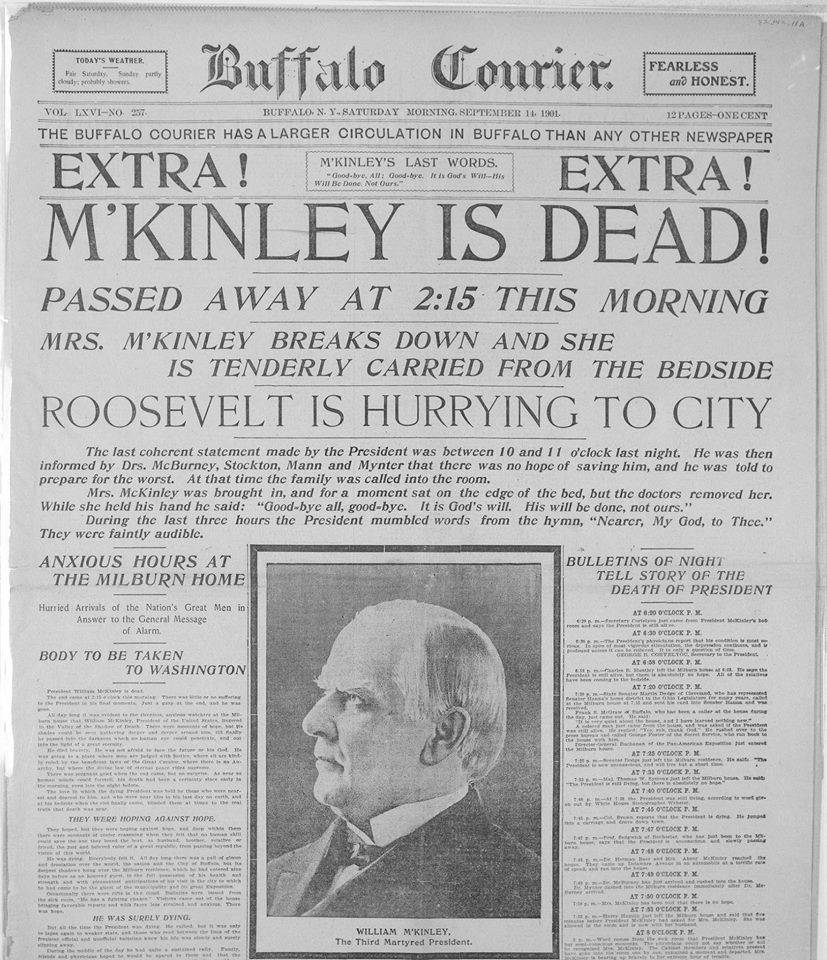
Online
Offline
Newspapers on Microfilm
A Google Doc listing all of the Buffalo-area newspapers we have on microfilm, starting in 1811 and ending in 2012. Our Buffalo newspapers from 1811 to 1963 are now online at Newspapers.com, which you may use for free when you are in our building. A few links have been added for free digitized Buffalo newspapers.

Newspapers.com
Thanks to a partnership with Newspapers.com, we have free on-site, full text access to Buffalo newspapers, 1811 to the present. Most of them came from our collection. Anyone logged into our guest WiFi can search our Newspapers.com account. Bring your own laptop, or bring a flash drive and use one of ours. This is the only online resource on this page that you cannot access at home--unless you live in New York State. Click the link for details.

Niagara Frontier
Niagara Frontier was the quarterly journal we published from 1953 to 1983, picking up where the former Buffalo Historical Society Publications left off. All issues are now online at Archive.org, thanks to scanning donated by W.S. Hein Co.
Offline
North & Shelgren, Architects: Plans & Drawings
This is a list of plans & drawings by the North & Shelgren architectural firm, which was active in the Buffalo area and beyond in the 20th century. They designed multiple churches in Western New York. Projects are listed in order by state, then city or town. These drawings are in offsite storage and are not digitized or online. They may be seen by appointment. Folder illustration courtesy of MaxPixel.net.
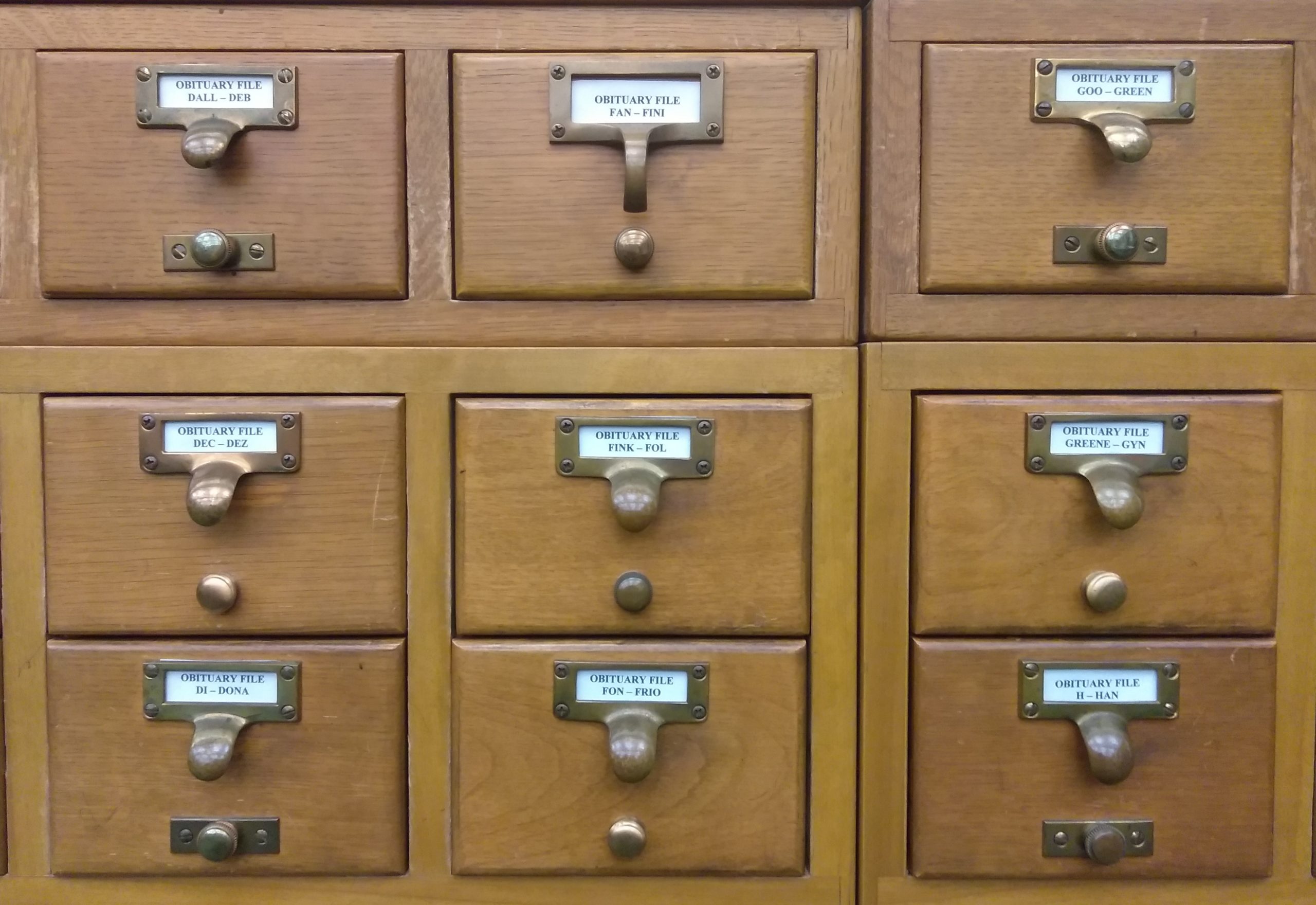
Obituary Index, 1812-1985
Our Obituary Index is now online, courtesy of FamilySearch.org. This card file has about 95,000 names. In 1985, the LDS Church microfilmed the entire file and now those films are online. You will be prompted to register for a free FamilySearch account if you don't already have one. You'll then be able to read through index cards just like if you were in our library.

Offline
Offbeat Buffalo: A Bibliography
Odd local book titles that amuse us and weird stuff that has been published here. This list is at WorldCat.

Offline
Olmstead, Frederick Law: A Bibliography
Buffalo is home to Frederick Law Olmsted's first park system, an integrated network of parks and parkways. Shown here are items by Olmsted and about our region's Olmsted legacy. All are in the collection of our library. This list is at WorldCat.

On This Day in Buffalo History Calendar
In case you missed it at the Museum's home page, here's a shortcut to our popular On This Day calendar, which refreshes every day to show you major and minor anniversaries in the Buffalo area. You can move forward and backward in it by clicking on the pointing fingers. The original Google calendar version can be viewed here. Image courtesy of Pickpik.com.

Offline
Orphan Home Records: A List
These are the only items in our collection that identify children by name in any of Buffalo’s orphanages. They are not digitized or online and must be used in person. The links provide greater bibliographic detail about each source. Image courtesy of Pickpik.com.

Online
Offline
Pan-American Exposition: What We Have
Not surprisingly, we have a wealth of material on the 1901 Pan-American Exposition, in a wide variety of formats: picture books, guide books, photographs, maps, pamphlets, scrapbooks, periodicals, internal records, personal papers, advertising pieces, clippings, 3-D souvenirs and objects. This is a master guide to to what we have, with links to what is online. All of the Pan-Am projects that we used to link to at this page have been moved into this guide. Offline, undigitized items can be seen by appointment.

Pearce & Pearce Collection: Index of Addresses
Pearce & Pearce was a company that built a lot of post-war suburban houses and a few commercial developments in Tonawanda, Amherst & Clarence. In 2017, we acquired their business records. If you own a Pearce & Pearce house, we may have the original paperwork from your home. Here's an index of the addresses for which we have files.

Peeps at the Pan-American, 3 vols.
Here in full color are the 3 volumes of Mabel Barnes' handwritten scrapbooks (Mss. W-119) chronicling her nineteen visits to the Pan-American Exposition in 1901. Mabel (1877-1946) was a schoolteacher at Fosdick-Masten Park High School (now City Honors). She took copious notes, collected souvenirs, and compiled these three diaries between 1905 and 1914. Many thanks to W.S. Hein for carefully scanning these volumes. Portrait of Mabel Barnes courtesy of City Honors High School.

Picture Book of Earlier Buffalo (1912)
Back when we were the Buffalo Historical Society, we released this edition (v. 16 of our Publications, 1912) of 400 photographs and renderings of Buffalo, most of which were from the 19th century. The volume is now in the public domain and has been digitized by Google Books. You are free to use the images as you see fit.

Offline
Picture Collections: A Guide
The Buffalo History Museum has been collecting visual material of all kinds ever since we were founded in 1862. We have an estimated 200,000 images sorted into about 100 specialized collections. Nearly all of these collections focus on the people, places, things, and events of the Buffalo/Niagara area. This guide describes our major photographic collections, which are mostly undigitized and offline.

Picture Store
Over 4,000 vintage Buffalo-area images from our collection are available as home or office decor, keepsakes, and high-resolution digital downloads. All proceeds support the care and housing of Museum collections.

Pierce, Maris B. (1811-1874) Papers
Born on the Allegany Reservation in 1810, Pierce graduated from Dartmouth, making him one of the first Seneca Indians to get a college education. After college, he settled on the Buffalo Creek Reservation and fought against the removal of Seneca from their lands. All 800+ of his letters and papers are now digitized. We believe they are among the oldest surviving personal papers of a Native person in the United States.

Offline
Porter, Augustus (1769-1849) Papers
In 1806, Augustus Porter moved his family to Niagara Falls and developed a business interest, with his brother Peter B. Porter, Benjamin Barton, and Joseph Annin. They purchased a large tract of land from the State of New York, adjacent to and above Niagara Falls. They had exclusive rights of transporting various goods and services across this acreage. Inventory now online at the Empire Archival Discovery Cooperative
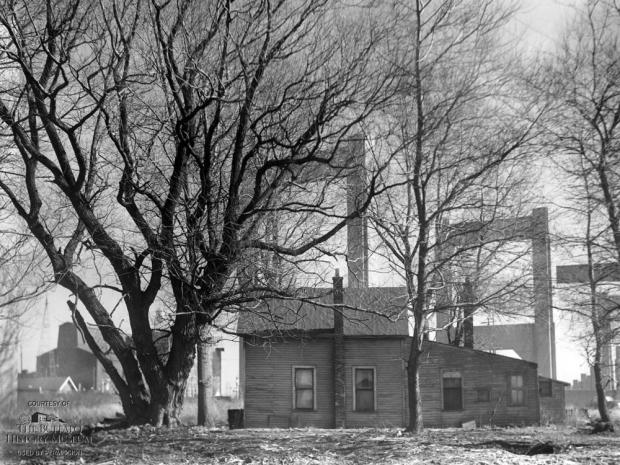
Offline
Porterfield, Wilbur (1873-1958): A List of Photographs
Wilbur Porterfield was a staff photographer at the Buffalo Courier-Express newspaper. This collection is comprised of over 7,600 black & white landscapes and cityscapes, nearly all in Western New York. They are boxed in order by broad subject categories, as shown in the Classification column. Each photograph is individually listed. They are not digitized or online and can be viewed in person.

Presidential Visits to Buffalo: A List
Starting with James Monroe in 1818, a lot of U.S. presidents have visited Buffalo as candidates, during their terms, or after they left office. Here is our list. The illustration is courtesy of PublicDomainPictures.net.

Prohibition Raids in Erie County, 1920-1923: A Google Map
Based on newspaper articles and other sources from the period, here are about 900 sites in Buffalo and Erie County raided by federal authorities during the early years of Prohibition, 1920-1923. Map points are color-coded by type of building.

Offline
Protest, Radicalism & Social Movements in Buffalo: A Bibliography
Civil rights, labor strikes, riots, anti-war movements, socialism, communism, activism, reform, and protest of all kinds in the Buffalo, NY area. Everything listed here is in our library. This list is at WorldCat.

Online
Offline
Racism and Segregation in Buffalo: A Reading List
The targeted mass shooting in Tops supermarket on May 14, 2022, allegedly by a white supremacist, exposed the reality of a predominantly Black neighborhood made vulnerable by decades of disinvestment, deindustrialization, redlining, racism, and segregation. This bibliography features scholarship on the history of Buffalo’s East side.

Raindrop.io
Raindrop is a bookmarking manager. We use it to keep track of useful websites for Buffalo-area history & genealogy. We have almost 2000 links sorted into easy-to-understand categories or "tags." We are still adding links.

Researchers for Hire
Sometimes you just can't get to Buffalo to look at offline material in person, in our collection or elsewhere. If that's the case, here is our list of Researchers For Hire. These individuals are self-employed, set their own rates & fees, and work independently of the Museum. Some do genealogy; some do house history; some have other areas of expertise. Listing here does not imply an endorsement or guarantee. Icon courtesy of thenounproject.com.

Revolutionary War Veterans in Western NY
A list of about 150 names transcribed from a small, handwritten card file giving places of burial, plus a checkmark indicating if we have a photocopy of the veteran's pension file.

Online
Offline
Richardson Complex: A Research Guide
Do you have plans & drawings of the Richardson complex? Where are patient records? What about photographs? This guide answers these and other frequently-asked questions about the Richardson-Olmsted complex, also known as the Buffalo State Hospital, the Buffalo Psychiatric Center, and the Buffalo Asylum for the Insane. With links where available.

Offline
Roberts-Sidway-Spaulding Papers, 1850-1936
The papers of James A. Roberts; Frank S. Sidway; the Sidway, Skinner & Moore firm; and Elbridge G. Spaulding. Inventory now online at the Empire Archival Discovery Cooperative.

Online
Offline
Seneca Indian Collections
The Buffalo History Museum has been collecting materials that document the first occupants of this land ever since we were founded in 1862. This is an extensive list. We add links when we find any of these works online in full text. Illustration of wampum from Extra Census Bulletin: Indians: The Six Nations of New York (1892), p. 48.
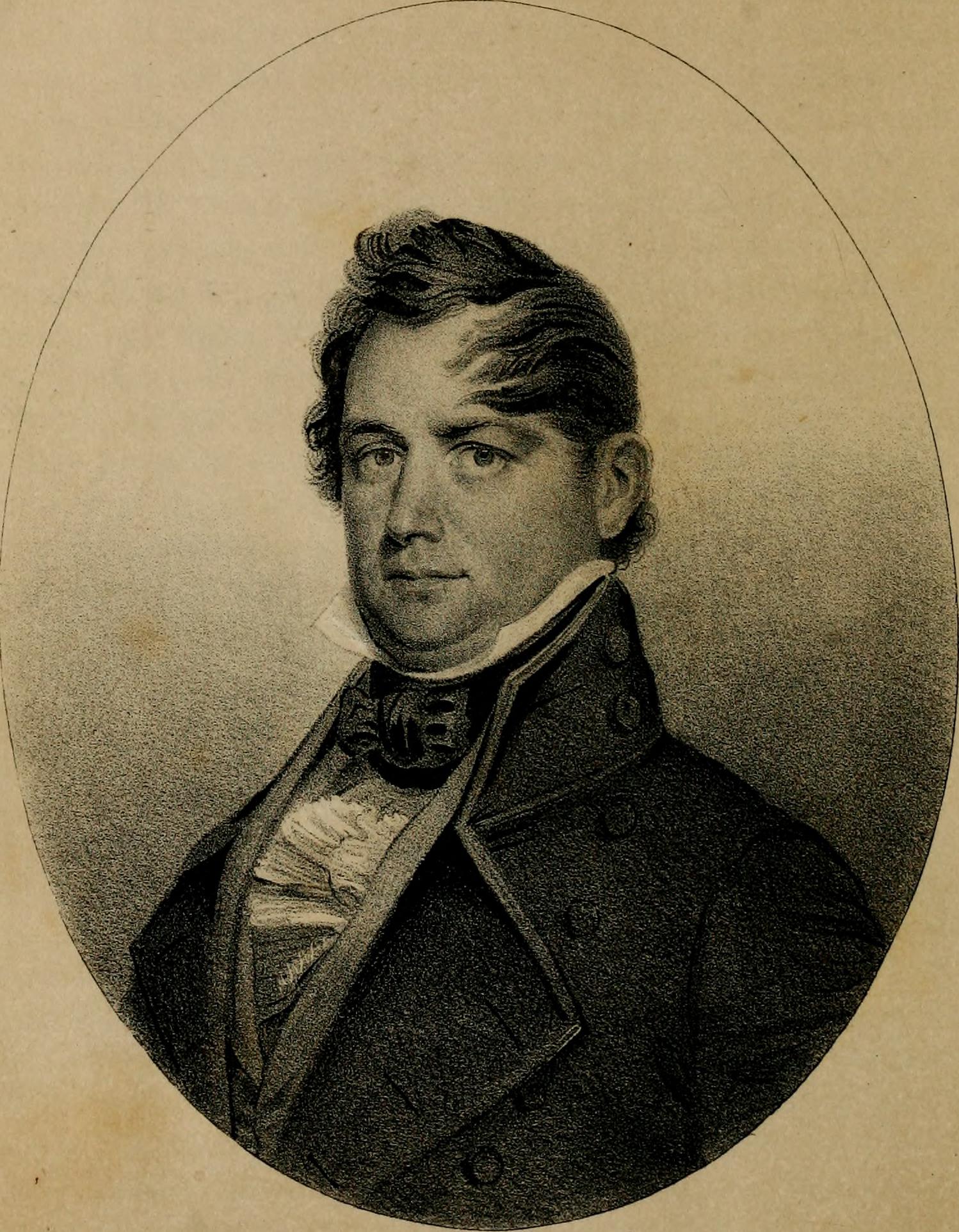
Slave Extradition Documents from Peter B. Porter’s Papers
Peter Buell Porter (1773-1844) was an American lawyer, soldier, and politician who served as U.S. Secretary of War from 1828 to 1829. This folder contains 19 documents related to the extradition of enslaved persons, dating from 1821 to 1837. Freedom seekers/fugitives identified by name are Solomon Mosby, George Cabell, and Jesse Happy. The rest of the Porter collection is undigitized and offline and is described in this guide.

Slideshare.net
We have several Powerpoint talks and tutorials online here: Genealogy, House History, Women Architects, Hispanic History, and planning your first visit to our library.
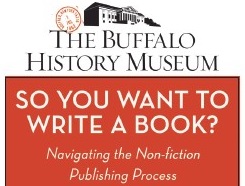
So You Want to Write a Book? Navigating the Nonfiction Writing Process
In 2018 and 2019, the Buffalo History Museum hosted a four-part workshop series on the nonfiction publishing process. Collected here are videos of each workshop, with all of the course handouts and slide shows.

St. Francis Xavier Cemetery Records, 1850-1982
These pages are digital scans of the microfilmed cemetery records from St. Francis Xavier Roman Catholic Church in Black Rock. St. Francis Xavier Cemetery is located on Niagara Street next to Riverside Park. This list was compiled ca. 1982 and omits subsequent burials.

Offline
Stereoview Collection
Listed here are about 2,500 stereoviews, also called stereographs and stereocards, mostly of the Buffalo/Niagara area, that are offline and can be seen by appointment. Most date from around 1870-1900. Cards are filed in order by photographer's name.

Online
Offline
Talbert, Mary Burnett: A Selected Bibliography
This guide lists our most significant collections related to civil rights activist Mary B. Talbert (1866-1923): some family papers and photographs, plus online and offline published sources. We added links where available.

Offline
True Crime in Buffalo: A Bibliography
From the early 19th century to the present, here are nonfiction accounts of crimes, scandals, law enforcement, prisons, jails, hearings, court cases, and trials, both civil and criminal, in the Buffalo/Niagara area. All of the items listed below are in the Library collection. This list is at WorldCat.

Offline
Underground Railroad and Abolition in Buffalo & Upstate NY: A Bibliography
There is no published book-length history of the Underground Railroad in Buffalo, NY. The closest we have is books and articles about the Niagara Frontier and upstate/western New York in general, which are listed here. This bibliography features works owned by the Buffalo History Museum plus works owned by institutions other than us. This list is at WorldCat.

Undertaker Records, 1883-1899
The Buffalo History Museum has ledgers from two Buffalo funeral directors, Henry Farwell and Theophilus Speyser. This is an A-Z list of everyone they recorded in their ledgers, over 3,100 names from 1883 to 1899. These are our only funeral home records.

Vietnam War Casualties from Western New York
Here are 548 names drawn from Patrick Kavanagh's In Remembrance Of, a scrapbook of obituaries and news articles about servicemen and women from Western New York who lost their lives serving in the Vietnam War, compiled in 2015. His scrapbook is not online but he granted permission for us to digitize the index. Illustration courtesy of PublicDomainPictures.net.

War of 1812 in the Buffalo Area
Selections from our vast War of 1812 holdings, including original and published letters, journals, artist's conceptions, diaries, scrapbooks, reminiscences, news clippings, and other ephemera.

Offline
War of 1812 in the Buffalo/Niagara Area: A Bibliography
This list doesn't include every possible source that mentions Buffalo, NY, but it does lead you to the most important ones about how Buffalo, Black Rock, and both sides of the Niagara River experienced the War of 1812. All of the items listed here are in the Library collection. This list is at WorldCat.

War of 1812: Register of Soldiers in the Williamsville Hospital, 1814-1815
Here are black & white scans of over 300 pages of handwritten notes on the soldiers admitted to the Williamsville Hospital during the War of 1812. The original register is in the collection of the U.S. National Archives. Here is their record of the collection. Scans were acquired and shared with us by the Cheektowaga Historical Association.

Online
Offline
Who Was Nancy Bowen? A Reading List
On March 6, 1930, little Henri Marchand, Jr. came home to 576 Riley Street in Buffalo to discover the lifeless body of his mother Clothilde Marchand on the stairs. What parts did Henri Marchand Sr., the husband of Clothilde, and Lila Jimerson and Nancy Bowen, two indigenous women, play in this murder? This bibliography accompanies our Hodinöhsö:ni’ Resurgence: Marie Watt, Calling Back, Calling Forward exhibit. Illustration of Henri Marchand, Jr. and Clothilde Marchand from The Buffalo Evening News Financial Edition, March 7, 1930, p. 1

Wilcox, Ansley: Scrapbook, 1901
Digitized by the Theodore Roosevelt Inaugural Site as part of an initiative sponsored by the Theodore Roosevelt Center in North Dakota, this is the scrapbook compiled by Ansley Wilcox in 1901. Theodore Roosevelt took the oath of office in Wilcox's mansion after the assassination of President William McKinley. The original scrapbook remains in our collection. Portrait of Wilcox courtesy of Wikipedia.

Offline
Women’s History in the Buffalo/Niagara Area: A Bibliography
Includes works by and about notable and ordinary women, including organizations, biographies, suffrage, professions, and more. We're limited to 500 items on these lists, so we have more than we were able to include. This list is at WorldCat.

Women’s History: A Google Map
To celebrate the centennial of women's suffrage in the US, we developed a map of over 100 sites in the Buffalo area associated with women's activities and achievements in business, education, politics, charities, the arts, and more. This map was begun by intern Amber Levias in 2019. We are still adding addresses.

Online
Offline
Works Progress Administration (WPA)
The largest collection of records and archival material from the WPA is in the U.S. National Archives in Washington, D.C. Their papers are not digitized or online, so an in-person visit is needed to view their files. This guide is devoted to what is in our library. Includes Public Works Administration (PWA) projects. Links have been added where available. Poster courtesy of the Library of Congress.

Offline
World War I in Buffalo: A Bibliography
Listed here are books and manuscripts in our library about how the Buffalo, NY area experienced and participated in the first World War. This list is at WorldCat.

Offline
Wright, Frank Lloyd in the Buffalo Area: A Bibliography
Buffalo has more Wright-designed buildings than any other city except Chicago. The items listed here are in our library collection. This list is at WorldCat.